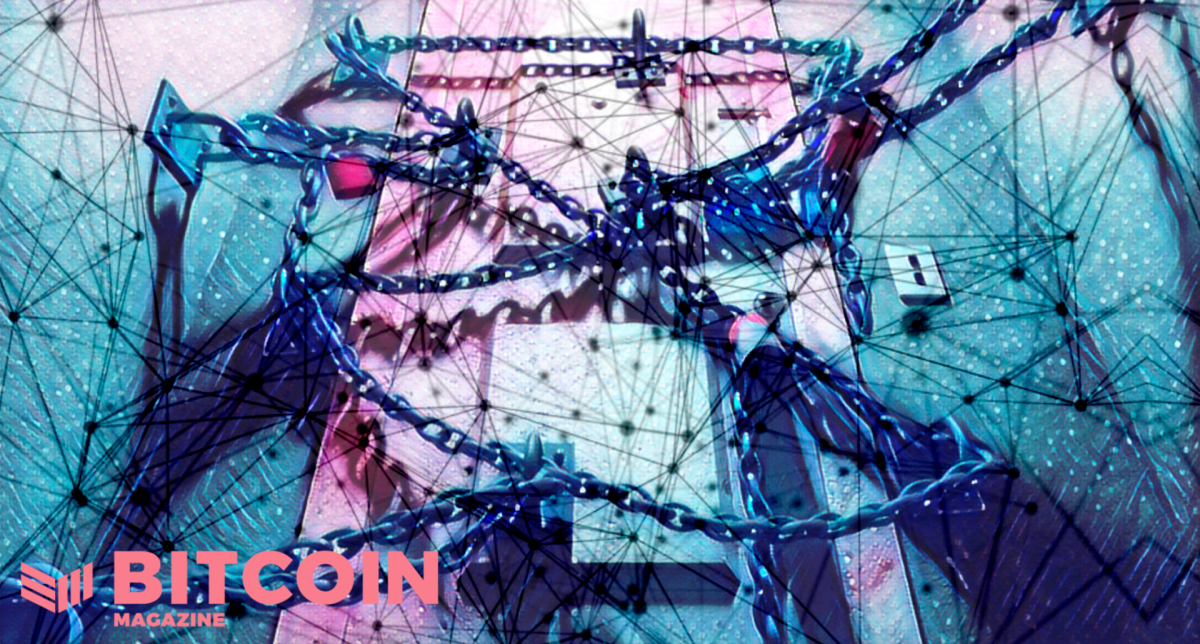Beanie Babies and Black Markets: Where Mainstream Media Gets Bitcoin Wrong
Bitcoin has a media problem. Or, perhaps, the media has a Bitcoin problem.
Mainstream media has often framed Bitcoin with the same scandalous curiosity that may publicize a troubled former child star or a controversial tech startup. Most journalists have viewed it as a sideshow, a distraction that warrants only so much attention lest it detract from the supreme spectacle of the 21st century’s historic advancements in technology, business and finance. By some combination of apathy, lack of curiosity and ignorance, Bitcoin is often misrepresented or represented poorly in mainstream news outlets.
Let’s cut these career journalists some slack. After all, a traditional finance reporter may be daunted by this new and confusing world of decentralized digital currency. And fluent as they may be with the ever-evolving world, seasoned technology reporters may nonetheless view Bitcoin as a leviathan of the technically arcane.
Bitcoin is indeed a complex esoterica. So it’s little wonder that just four years after its creation (when Bitcoin was beginning to formally enter the international conscience), Vitalik Buterin opined in the seventh print volume of Bitcoin Magazine that “a significant amount of disinformation about Bitcoin continues to float around the internet.”
Read Vitalik Buterin’s “Common Misconceptions About Bitcoin — A Guide for Journalists.”
In an article called “Common Misconceptions About Bitcoin — A Guide for Journalists,” Buterin listed five prevalent misconceptions and attempted to set the record straight.
“Whether a given story is unfairly biased against Bitcoin, or even unfairly biased in its favor, it is important to work together to make sure that the truth always comes out — in the first case, not to needlessly scare potential Bitcoin adopters away, and in the second case, not to disappoint,” he wrote.
When writing for the February 2013 print issue, Buterin admitted that things had gotten better from Bitcoin’s earliest years. But over seven years since Buterin’s original article was published, we clearly have a long way to go until even rudimentary Bitcoin literacy becomes prevalent in the circles of traditional journalists.
No, Bitcoin Is Not a Company
I say “rudimentary” because, to this day, some of the most glaring misconceptions about Bitcoin are still the easiest to dismiss. It would be unreasonable for us to expect journalists whose beat is typically anything but Bitcoin to parse the differences in the block size debate or have a fluent understanding of the Lightning Network’s technical infrastructure.
But 11 years out from Bitcoin’s launch, it’s absurd to see the core tenet of Bitcoin’s architecture — its decentralization — so blatantly mischaracterized or outright ignored. Or, as one Motley Fool article from 2019 shows, Bitcoin is constantly contrasted with a corporate structure:
“Here’s the problem: Buying a cryptocurrency token (bitcoin or most any other) does not give investors any ownership in the underlying blockchain. If the underlying blockchain of a crypto token becomes the basis for innovation at a particular company or within an industry, its associated token isn’t necessarily going to benefit (and neither will token-holders),” the article reads.
When you buy bitcoin, you are not buying shares of a company, nor do you hold equity (as this excerpt laments); you are buying into a digital monetary system that exists outside of the current system. When you understand that Bitcoin is a monetary system (and thus also intrinsically a store of value, medium of exchange and a unit of account), the comparison to a corporation is as anathema to Bitcoin’s design as it is ignorant.
To be sure, this conversation has evolved. At least now, slightly more educated detractors know that Bitcoin is not “owned” by anyone and no corporation has de jure control over it. Altering their stance, many now argue that miners have de facto control of the network. Centralization of mining in China is a cause for concern, but what the alarmist viewpoints don’t take into account are the complex social and technical mechanisms that check and balance mining centralization.
As Kyle Torpey has espoused, ultimately investors hold the keys to the kingdom, and as “NO2X” showed us, so too do the node operators — something Satoshi intended from the start.
Blockchain, Not Beanie Babies
My next gripe with mainstream Bitcoin coverage is not one Buterin covered. In 2013, few altcoins existed, and the ICO boom, which Buterin’s Ethereum would ironically detonate, was a few years out.
But in the fallout of 2017’s market hysteria, as snake oil and utopian promises flowed like sour mana from the marketing teams of a new class of crypto-hucksters, the idea that the real innovation is “blockchain not Bitcoin” has ossified in the minds of many who follow the cryptocurrency scene with marginal interest.
“To answer why bitcoin has become so big,” one Guardian columnist pontificated in 2018, “we need to separate the usefulness of the underlying technology called ‘blockchain’ from the mania of people turning bitcoin into a big dumb lottery. Blockchain is simply a nifty software invention (which is open-source and free for anyone to use), whereas bitcoin is just one well-known way to use it.”
Imagine for a moment that people had said TCP/IP is just “one well-known way to use it” and that the real innovation was the internet, which must be co-opted to create a private, permissioned version of the real thing. People did this: the result was the intranet, a private version of the internet that is primarily used for private functions for businesses or other organizations today.
Hack, Hacks, Hacked
Of all Buterin’s observations in 2013, none ring so painfully true today as the ever-raging debate over Bitcoin’s security.
I have personally read numerous articles that misattribute an exchange’s servers being compromised to a security breach in Bitcoin’s core software.
“For a technology that’s supposed to be hyper secure, in practice, it’s often proven itself to be, well, not,” one Recode (Vox) article from 2019 states with snarky confidence. “Bitcoin and other cryptocurrencies have proven a prime target for hackers despite their characterization by proponents as super safe and impregnable.”
This is an egregious mischaracterization of Bitcoin’s design. And even though the author later on distinguishes between Bitcoin’s blockchain and Binance’s own security (with Binance’s 2019 hack as the timely subject of the coverage), the lede suggests that Bitcoin itself was hacked. For the average reader, who might not get past the headline or first paragraph, this could be enough to cement in their mind that Bitcoin’s technical structure is shot full of holes. Indeed, the blunderbuss reporting of the likes of Vox are the forces that shred this security in front of the readers’ very eyes; even if this damage is fictional, the shrapnel is very real for readers who don’t know better.
The Eternally Bursting Bubble
When the media frames bitcoin exchange hacks in this way, it has the same effect as when undereducated journalists harp on the virtues of blockchain technology or mistakenly frame Bitcoin as a centralized entity. The truth eludes all but the most critical observers, and non-Bitcoiners are left with rotten kernels of mistruths (or, in the worst cases, propaganda), which they accept as truisms: After all, didn’t the Guardian publish the story?
One of these aphorisms is the ever-looming Bitcoin obituary. I hardly need to cite any examples here, as this phenomenon is burned into any faithful Bitcoiner’s consciousness. If misconceptions about Bitcoin’s decentralization and its security are the head and neck of our collective albatross, then this is the sagging torso — it is constantly weighing us down.
Buterin wrote particularly about a myth in 2011 that bitcoin’s market price had fallen to $0.01. How prescient this gripe was would only become apparent following bitcoin’s meteoric race to $20,000. Ever since, the number of publications pronouncing Bitcoin dead has seemed to multiply; like a plague of cicadas, the death knells hum and rattle on with a pessimistic buzz.
Shy of transcending the $20,000 all-time high, we likely will not hear the end of these incessant wakes. Mainstream journalists tend to think that Icarus’s wings have dissolved and the boy is now dead. They ignore bitcoin setting local highs, so they believe that it is effectively dead or — as the New York Times’ Nathaniel Popper put it in yet another article extolling Bitcoin’s capacity to bankroll criminal activity — that bitcoin has “lost steam.”
Even as bitcoin reaches local highs in value — and as companies like Blockstream, Lightning Labs and others continue to push important protocol developments — the reports of Bitcoin’s untimely death pour in.
Keep them coming, and Bitcoiners will keep our tally going.
Dueling Narratives
Another primary misconception stems from Bitcoin’s utility and its branding as “electronic cash.”
Detractors often cite that no one is using bitcoin as a medium of exchange and that few retailers accept it. A wellspring of online theory and thought is remolding our perceptions of Bitcoin, though. It’s not just a currency but an entire monetary system. It’s not just cash, but it’s digital gold, as well.
Much like the gift of the internet became much more than sending messages, Bitcoin has evolved into more than a currency — or rather, our perception of it has. The gold narrative, of course, is still subjective. Many people see gold as highly speculative and of little use, so selling them on the notion that Bitcoin is digital gold — and by extension, valuable — will be a harder sell still and will likely take some years to cement. Still, deriding bitcoin as useless because you can’t buy coffee with it is an absurd and myopic view.
Not least because bitcoin has proven its utility as a permissionless and censorship-resistant form of currency. These are the key characteristics of Bitcoin, and as Nic Carter trenchantly observes in “A Most Peaceful Revolution,” this is what Bitcoin is all about: All of Bitcoin’s utility and significance, all of its appeal and all of its potency take root in its primary function as a monetary system that is parallel to and exists to undermine the state.
Hence why so many journalists, as evidenced by Buterin’s final objection in the 2013 article that persists even now, fixate on bitcoin’s utility in illicit markets. Indeed, the Silk Road catapulted bitcoin and its price to hitherto-unseen significance in 2010 and 2011. Bitcoin is first and foremost useful for edge cases like this, sectors of the economy that are illegal and cannot operate without a permissionless and pseudonymous means of exchange.
These are also the most interesting use cases for Bitcoin. For many journalists, they are the most sensational and salacious, so they crowd headlines in hopes of driving clicks in an industry that lives or dies on website traffic and SEO placement. Perhaps we could again cut these journalists some slack; after all, many of them are covering Bitcoin on an ad hoc basis on the whims of their editors.
But the common insistence that Bitcoin is only good for terrorism, drugs and other illicit activities is tragically overplayed. Fewer than 1 percent of Bitcoin transactions can be attributed to illicit activity, according to research by blockchain analytics firm Elliptic. Even so, stories of exchange hacks, ransomware and drug markets have outsized representation in mainstream media.
Again, perhaps we can chalk this one up to an era of broken incentives for online media, where sensationalism dominates both attention and content. From their bully pulpit, these outlets harangue and taunt Bitcoin proponents and whip their readers into their biased points of view.
But even so, it seems like statistics such as the one above should be hard enough evidence to snuff out this coverage; or at the least, journalists could include the illicit transactions that drive Bitcoin adoption in countries choked by despotism or international sanctions, such as Iran and Venezuela.
Another often-ignored statistic is that over 70 percent of bitcoin mining is sourced from renewable energy. In 2017, the world seemed to awaken to the trade-off of proof of work: More activity on the network equals more energy expended. This has led to the common refrain (now something of an inside joke among Bitcoiners) that Bitcoin will boil the oceans.
Hardly. Not only is the vast majority of bitcoin mined using renewable energy, but it consumes fewer kWh annually than Christmas lights or every idle device running in U.S. households yearly — not to mention that the carbon footprint is several magnitudes less than that of the global banking and finance industries.
Once again, we see a sensationalist narrative peddled with little regard for oppositional arguments or even hard statistics.
The Future of Bitcoin Misconceptions
Now, Bitcoin literacy among some journalists has improved since Buterin first covered these misconceptions in 2013. Bitcoin’s features, such as the 21 million hard cap, its decentralized node architecture and even the Lightning Network, are starting to take hold. But even so, misconceptions abound, some of which as evidenced in this article are almost as old as Bitcoin itself.
Uneducated reporting on Bitcoin eventually gave way to Bitcoin-specific media, of which Bitcoin Magazine was the seminal outlet. Until mainstream media acquaints itself more thoroughly with Bitcoin, we’ll be around to throw the FUD back in their faces and correct the record.
Some, as with their perceptions of gold, may never come to see the value that we do. Or, if they do, they may grudgingly succumb to the changing times as the old guard did with the advent of the internet.
No matter the scenario, Bitcoin needs a voice to right the fallacies preached by the mainstream. So, we’re not going anywhere.
The post Beanie Babies and Black Markets: Where Mainstream Media Gets Bitcoin Wrong appeared first on Bitcoin Magazine.









